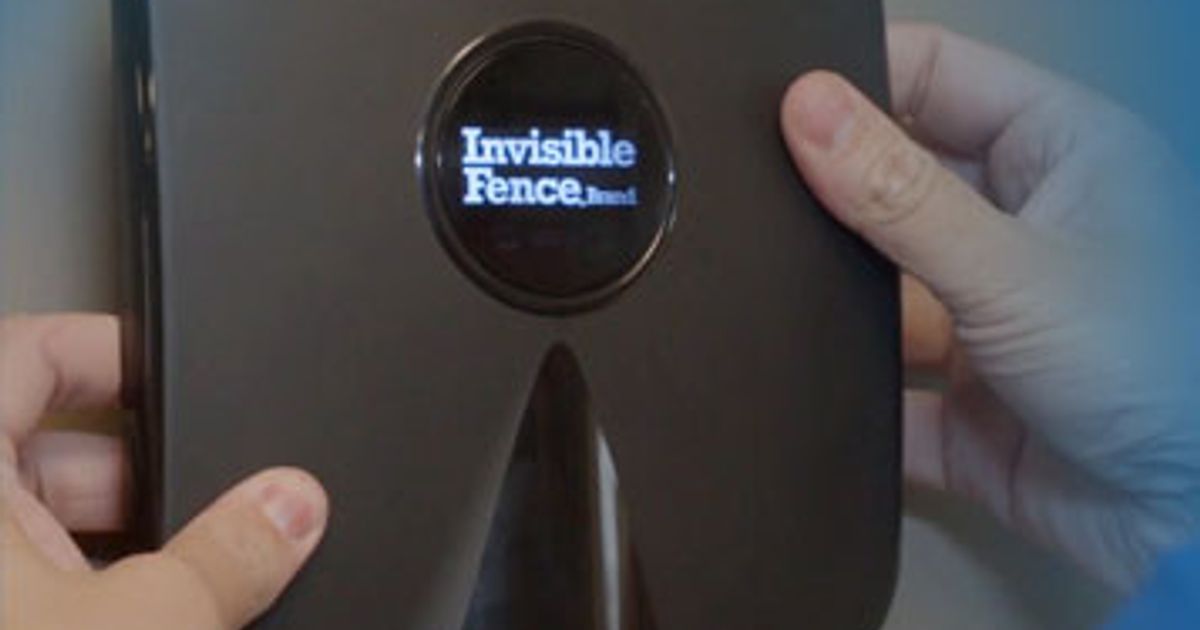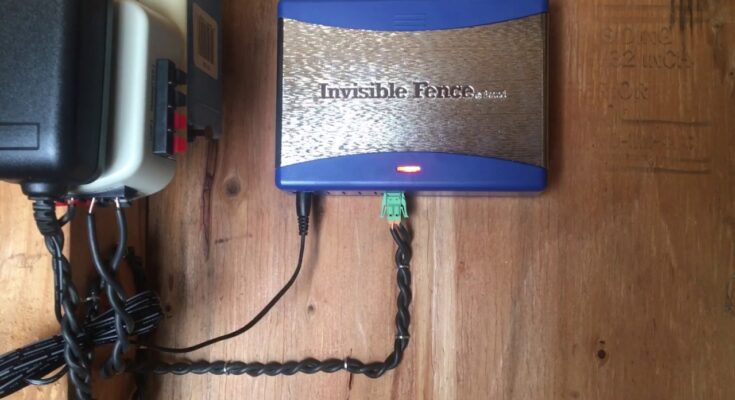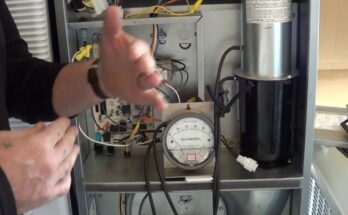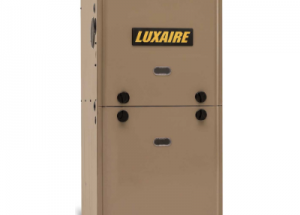Invisible Fence troubleshooting often involves checking the transmitter and inspecting the boundary wire for breaks. Ensuring the collar is functioning correctly is also crucial.
Invisible Fences are popular for keeping pets safe within a designated area. Sometimes, these systems may face issues that need troubleshooting. Common problems include a malfunctioning transmitter, a broken boundary wire, or a non-working collar. Identifying and resolving these issues quickly is essential for maintaining the system’s effectiveness.
Regular maintenance and checks can prevent most problems. This guide will help you understand and fix the common issues with Invisible Fences, ensuring your pet stays secure.
Introduction To Invisible Fences
Invisible fences keep your pets safe without physical barriers. They use technology to create an unseen boundary. These fences are popular among pet owners.
Purpose And Benefits
The purpose of invisible fences is to contain pets within a set area. They prevent pets from wandering off. They are useful for yards without traditional fences.
Benefits of invisible fences include:
- Cost-effective: Less expensive than traditional fences.
- Aesthetic appeal: No visible barriers to alter your landscape.
- Safety: Keeps pets away from roads and other hazards.
- Flexibility: Suitable for various yard shapes and sizes.
How They Work
Invisible fences work through a combination of technology and training. The system includes a transmitter, a boundary wire, and a pet collar.
- Transmitter: The transmitter sends a signal to the boundary wire.
- Boundary Wire: The wire marks the fence area and carries the signal.
- Pet Collar: The collar receives the signal from the wire.
When the pet nears the boundary, the collar warns them. The warning may be a beep or a mild static correction. Training helps pets learn the boundaries.
Understanding these components helps in troubleshooting issues.

Credit: m.youtube.com
Common Invisible Fence Issues
Invisible fences keep your pets safe. But, they can sometimes have problems. Knowing the common issues helps you fix them quickly. Below, we explore some frequent problems.
Wire Breaks
Wire breaks are a common issue with invisible fences. These breaks can stop the system from working. Look for these signs:
- No signal from the transmitter
- Beeping collar without a reason
- Dead zones in the fenced area
To fix a wire break, you need to locate the break. Use a wire break locator tool for this. After finding the break, use a wire splice kit to repair it.
Interference Problems
Interference problems can also affect your invisible fence. Other electronic devices can cause interference. These might include:
- Microwaves
- Television sets
- Metal objects
To reduce interference, keep the transmitter away from other electronics. Also, avoid running the wire near metal objects or power lines.
Regular checks can keep your invisible fence working well. This helps your pets stay safe.
Quick Fixes For Wire Breaks
Invisible fences are great for keeping pets safe. But, sometimes the wire can break. This stops the fence from working. Here are some quick fixes for wire breaks.
Locating The Break
Finding the break is the first step. You can use a wire locator tool. Walk around the yard with it. Listen for beeping sounds. The beeps get louder near the break.
If you don’t have a locator, look for visible damage. Check spots where the wire is above ground. Look near driveways and sidewalks. These areas often have breaks.
Repairing The Wire
Once you find the break, you can fix it. First, turn off the fence system. Then, cut the damaged wire ends. Strip about one inch of insulation from each end.
Twist the bare wires together. Use waterproof wire connectors. These keep the connection dry. You can also use electrical tape. Wrap the connection tightly.
After repairing the wire, turn the system back on. Check if the fence is working. Walk around with a collar to test it. If it works, the repair was successful.
| Step | Action |
|---|---|
| 1 | Turn off the fence system |
| 2 | Cut damaged wire ends |
| 3 | Strip insulation from wire ends |
| 4 | Twist bare wires together |
| 5 | Use waterproof connectors or tape |
| 6 | Turn the system back on |
| 7 | Test the fence with a collar |

Credit: www.invisiblefence.com
Dealing With Interference
Invisible fences are a great way to keep pets safe. But, they can face interference. Interference can disrupt the fence signal. This can cause the fence to fail. Below, we will explore how to identify and deal with interference.
Identifying Sources
To fix interference, you need to find the source. Here are common sources:
- Electronic devices: Devices like phones and microwaves can interfere.
- Metal objects: Metal fences and pipes can block the signal.
- Thick walls: Thick walls can weaken the signal.
- Other invisible fences: Nearby fences can overlap and cause issues.
Check each source one by one. Turn off devices and check the fence. Move metal objects away from the fence. Ensure no other fences are close by.
Mitigation Techniques
Once you find the source, use these techniques to reduce interference:
- Move electronic devices: Place devices far from the fence.
- Re-route wires: Avoid running fence wires near metal objects.
- Adjust fence settings: Increase the signal strength if possible.
- Install signal boosters: Use boosters to strengthen the signal.
Here is a quick reference table:
| Source | Mitigation Technique |
|---|---|
| Electronic devices | Move devices away |
| Metal objects | Re-route wires |
| Thick walls | Use signal boosters |
| Other fences | Increase signal strength |
By identifying and addressing sources of interference, you can ensure your invisible fence works well.
Collar Malfunctions
Invisible fence collars are essential for keeping your dog safe. Sometimes, these collars face issues that need troubleshooting. Understanding common malfunctions can help resolve problems quickly.
Battery Issues
The collar needs a working battery to function properly. A dead or low battery can cause malfunctions.
- Check Battery Life: Ensure the battery isn’t dead. Replace if needed.
- Use Correct Battery Type: Using the wrong battery can cause issues. Always use the recommended type.
- Clean Battery Contacts: Dirt on the contacts can affect performance. Clean contacts with a dry cloth.
Signal Reception Problems
The collar must receive a signal from the transmitter. If it doesn’t, the fence won’t work correctly.
- Check Collar Fit: A loose collar won’t receive signals well. Adjust for a snug fit.
- Inspect Antenna: Damage to the antenna can disrupt signals. Replace if damaged.
- Verify Signal Range: Ensure the collar is within the transmitter’s range. Move closer if needed.
Training And Behavior Issues
Invisible fence systems are great for keeping pets safe. Yet, training and behavior issues can arise. These can lead to inconsistent responses and confusion for your pet. Addressing these issues is crucial for the system to work effectively.
Inconsistent Responses
Inconsistent responses are common in invisible fence systems. Your pet might not always react the same way to the boundary. This can confuse them and reduce the system’s effectiveness.
- Check the Collar: Ensure the collar fits snugly. Loose collars can cause inconsistent signals.
- Inspect the Battery: A weak battery can lead to inconsistent responses.
- Test the Boundary: Walk the boundary with the collar to check signal strength.
Sometimes, pets ignore the signals. This can be due to poor training or distractions. Ensure your training sessions are consistent and free of distractions.
Reinforcement Techniques
Reinforcement techniques are vital for effective training. Positive reinforcement encourages pets to respect the boundary.
- Use Treats: Reward your pet with treats when they stay within the boundary.
- Verbal Praise: Use verbal praise to reinforce positive behavior.
- Consistency: Be consistent with your training sessions. Pets learn best with routine.
For stubborn pets, use a combination of techniques. This includes both positive and negative reinforcement. Always ensure the training is humane and stress-free.
Keep training sessions short but frequent. This helps in better retention and reduces stress. Happy training leads to a happy pet.
Maintenance Tips
Maintaining your invisible fence ensures its longevity and functionality. Regular upkeep prevents problems and keeps your pets safe. Follow these maintenance tips to keep your system running smoothly.
Regular Inspections
Inspect the invisible fence system weekly. Check the boundary wire for any breaks or damage. Look at the transmitter for any signs of wear or malfunction. Ensure the collar batteries are fully charged or replaced if needed. Use a tester to verify the system is working. Regular inspections help identify issues before they become major problems.
Seasonal Adjustments
Adjust your fence settings with the changing seasons. In winter, snow can disrupt the signal. Adjust the signal strength to compensate. In summer, soil conditions may affect the wire. Check the boundary line for any changes. Seasonal adjustments ensure the fence works year-round. Follow these simple steps:
- Check boundary signal strength.
- Inspect wire placement.
- Adjust settings as needed.
- Test the system after adjustments.
Regular maintenance keeps your invisible fence in top shape. It ensures your pets remain safely within the boundaries.

Credit: www.invisiblefence.com
When To Call A Professional
Invisible fences are great for keeping pets safe. But sometimes, things go wrong. It is important to know when to call a professional. Some problems need expert help. This section will guide you on when to seek help.
Persistent Problems
If the fence fails often, call a professional. Simple fixes might not work. Here are some signs:
- Frequent collar beeping
- Random shocks to your pet
- Fence boundary issues
These issues may need expert tools and skills. A professional can diagnose the problem quickly.
Advanced Repairs
Some repairs are too complex for DIY. These may include:
- Wire breaks underground
- Faulty transmitter
- Collar malfunctions
These issues require special equipment. A professional has the right tools to fix them.
Here is a table to summarize when to call a professional:
| Problem | When to Call a Pro |
|---|---|
| Frequent collar beeping | Yes |
| Wire breaks underground | Yes |
| Random shocks | Yes |
| Fence boundary issues | Yes |
| Faulty transmitter | Yes |
| Collar malfunctions | Yes |
Frequently Asked Questions
Why Is My Invisible Dog Fence Not Working?
Your invisible dog fence might not be working due to a broken wire, dead battery, or faulty transmitter. Check these components.
Why Is My Invisible Fence Showing A Red Light?
Your invisible fence shows a red light due to a broken wire or a power issue. Check connections and the wire.
What Does A Flashing Green Light Mean On An Invisible Fence?
A flashing green light on an invisible fence typically means the system is functioning correctly and the boundary is active.
What Are The Problems With Invisible Fences?
Invisible fences can fail to keep pets contained. Pets may experience anxiety or fear. They offer no protection from external threats. Training is essential but often inconsistent. They can malfunction or be breached easily.
Conclusion
Troubleshooting your invisible fence can save time and money. Follow our tips to ensure your pets stay safe. Regular maintenance and understanding common issues will keep your system running smoothly. Don’t hesitate to consult a professional if needed. Keep your pets secure and enjoy peace of mind.



